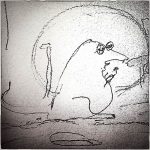Category: To Do
-
Don McCullin
The Landscape brings together for the first time a collection of McCullin’s landscape photography, primarily set against the stormy backdrop of Somerset, where he now resides. The imagery of his home county, ravaged by storms, projects the associations of a battlefield or the views of one intimate with scenes of war. The book also features…
-
Urbex
Beauty in Decay: On-line slideshows to music Short documentary video I do not find this as powerful as the still shot slideshows. Read on-line http://www.dailymotion.com/video/x4ixdny_download-beauty-in-decay-urbex-free-books_news
-
Landscape Photography and Art
Landscape photography and printmaking draws on a long tradition of landscape art that can inform different styles and approaches for my own work. I want to work more on the underlying theory of landscape composition and bridging elements, perspective etc. Abstraction. To make my landscape photography and printmaking more conscious of the influences on my…
-
The Contemporary Abyss
TASK: Read Simon Morley ‘Staring into the Contemporary Abyss’. Choose any body of work you feel explores the sublime. It may be a photographic project, a work of literature, cinema, or any other medium. Write at least 300 words describing how you believe the work you have selected relates to the sublime. Use Morley’s text…
-
Stephen Gill
https://www.stephengill.co.uk/portfolio/portfolio/nggallery/album-1-2/Night-Procession/thumbnails “Stephen Gill has learnt this: to haunt the places that haunt him. His photo-accumulations demonstrate a tender vision factored out of experience; alert, watchful, not overeager, wary of that mendacious conceit, ‘closure’. There is always flow, momentum, the sense of a man passing through a place that delights him. A sense of stepping down,…
-
British Landscape Photography
‘Landscape for Everyone’, published in John Taylor (1994) A Dream of England: Landscape, Photography and the Tourist’s Imagination. In this piece Taylor discusses the ways in which symbolism of the ‘timeless’ and ‘infinitely different and varied’ English landscape was used during World War II to encourage patriotic emotion and resistance against German ‘industrialisation gone riot’. In 1940…
-
Preconceptions about Landscape
TASK:Abandon technique. Pick up a pencil and draw a very rough sketch of a ‘landscape’ picture or brainstorm. I found this quite difficult because I have been doing landscape drawings and paintings for OCA Fine Art courses (See my Landscape Art and Prints on Zemniimages). These have broadened my own preconceptions of what landscape can be to…
-
Awoiska van der molen
Awoiska van der Molen (born 1972) is a Dutch photographer, living in Amsterdam. Between 2000 and 2003, van der Molen made portraits of charismatic women she met on the streets of Manhattan, later switching to people judged by different criteria. After that she turned to photographing anonymous buildings at the edge of the city. Since 2009, she…
-
Steve McCurry
“Look carefully, be mindfully attentive to what is in front of you“. In Steve McCurry: The Unguarded Moment, the photojournalist Steve McCurry notes how he was prepared to engage with a subject no matter what the time frame. He felt that knowing the area or the place meant it would eventually offer up what he was looking for. One of his…
-
Eugene Atget
The French photographer Eugène Atget (1857–1927) produced documentary photography that was far removed from the frontier of photojournalism. During a working life that lasted from 1890 to 1927, Atget produced 10,000 images of Paris, working with a large format 24x18cm wooden camera and making and coating his own large glass plate negatives. Atget cared deeply…
